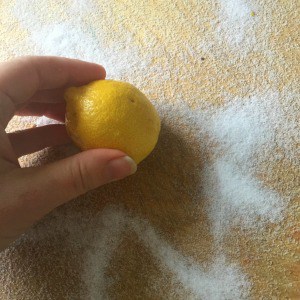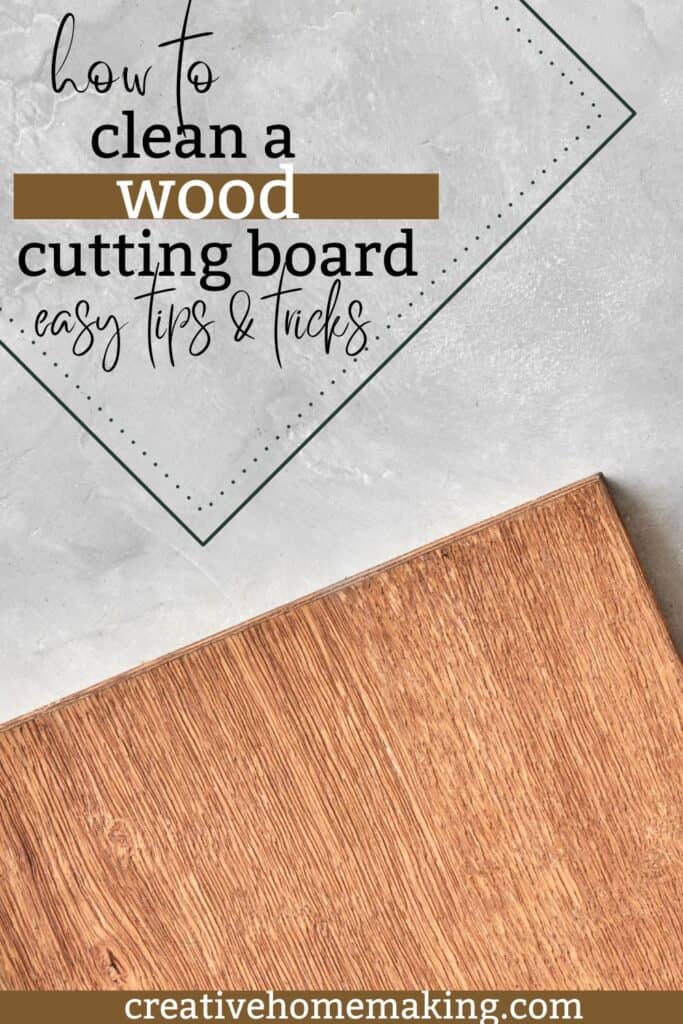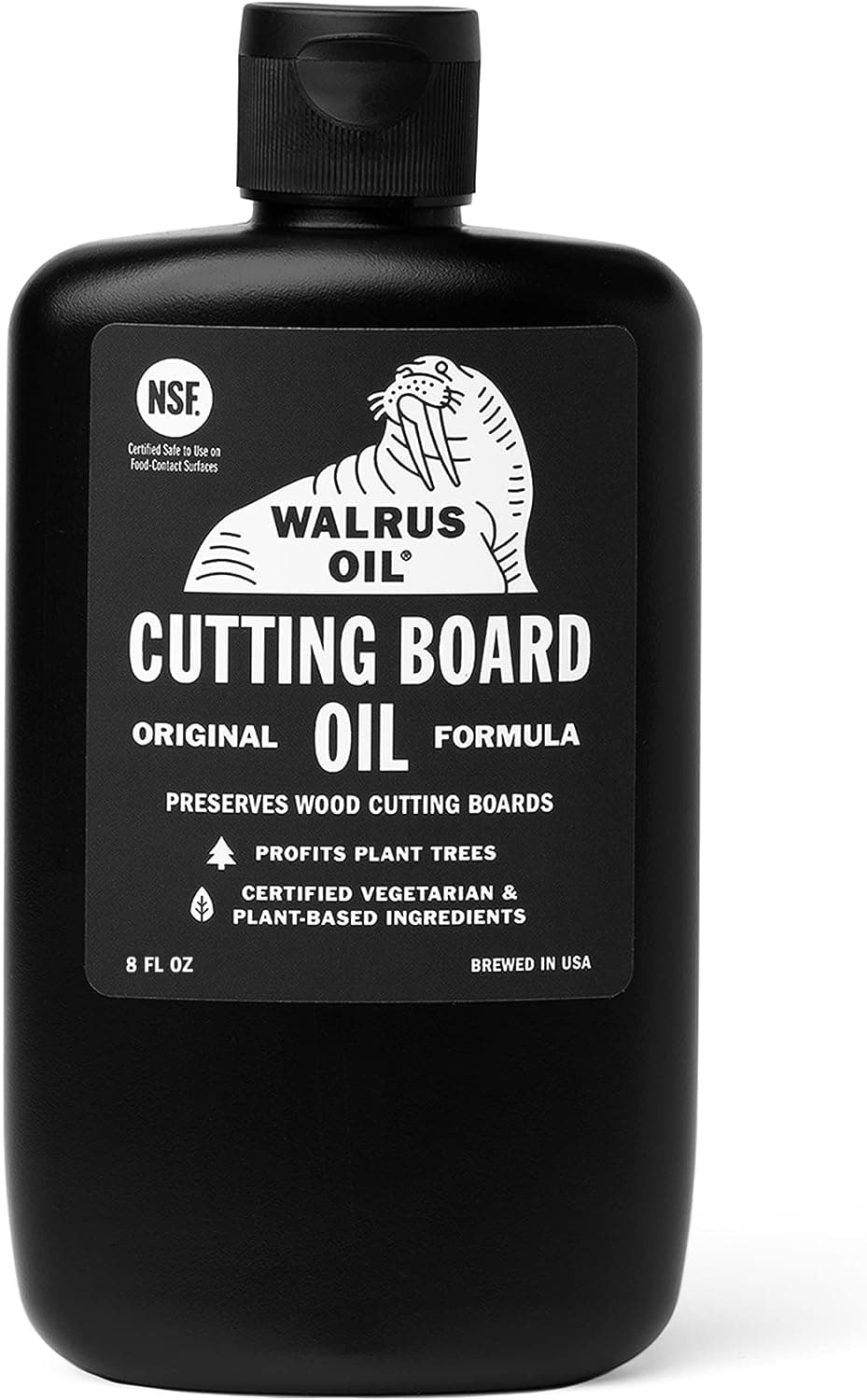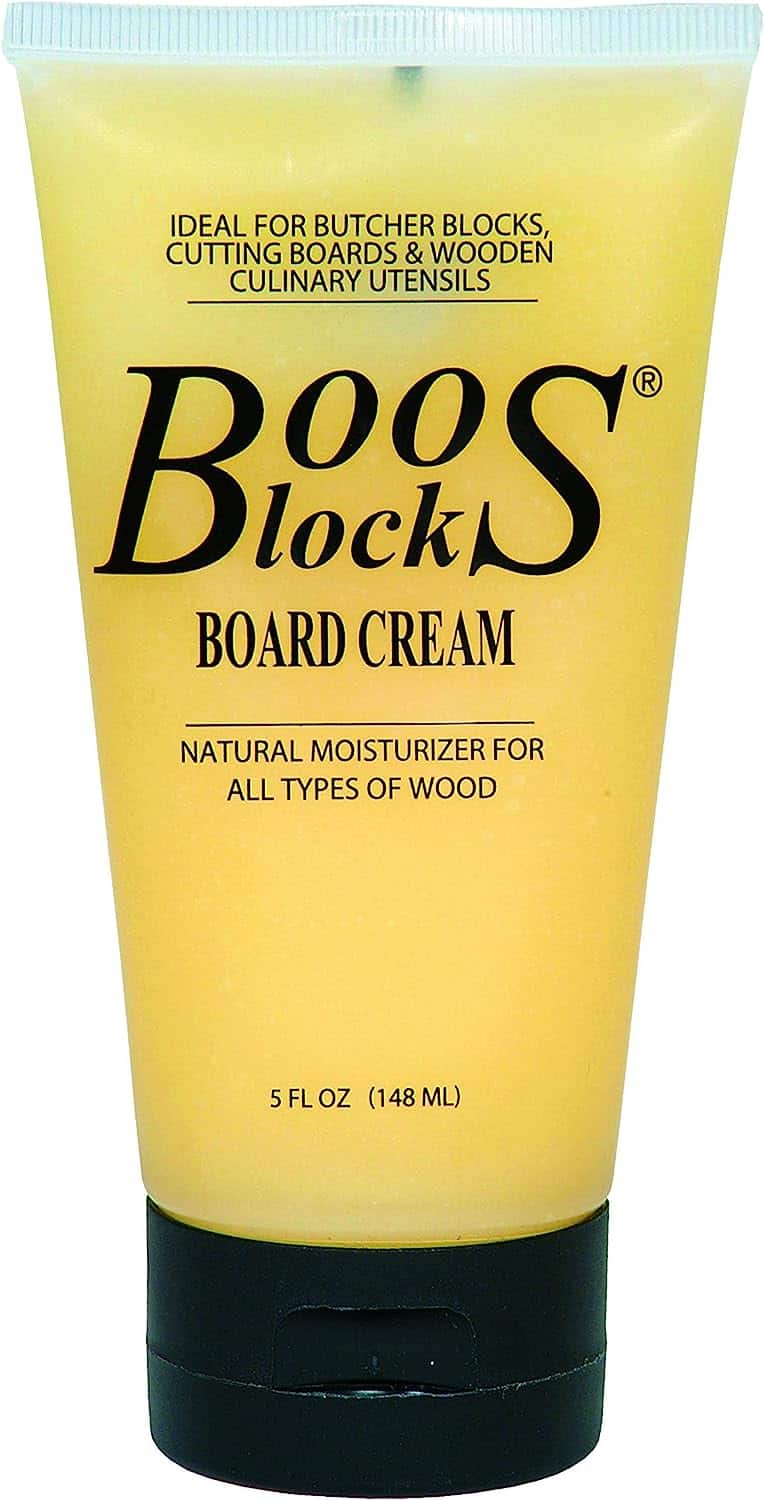Keeping your wood cutting board clean is essential for maintaining its longevity and preventing the growth of harmful bacteria. But with so many cleaning methods out there, it can be difficult to know which one is best for your board. In this article, we’ll go over some simple steps to help you clean your wood cutting board effectively and safely.
This post may contain affiliate links.
First, it’s important to note that wooden cutting boards should never be cleaned in the dishwasher or left to soak in water for extended periods of time. Doing so can cause the wood to warp or crack, and can also lead to the growth of bacteria. Instead, opt for a gentle cleaning method that won’t damage the wood. One popular option is to use a mixture of salt and lemon juice to scrub the surface of the board.
Related Article: Get Shiny Wooden Surfaces with this Homemade Wood Cleaner
Understanding the Importance of Cleaning Your Wood Cutting Board
If you’re someone who loves to cook, you probably know the importance of having a good quality cutting board. A wood cutting board is a classic choice for many home cooks, as it’s durable, long-lasting, and looks great in any kitchen. However, it’s important to remember that a wood cutting board requires proper care and maintenance to ensure it stays in good condition and doesn’t become a breeding ground for germs and bacteria.
Related Article: White Heat Marks on Wood Table: Causes and Solutions
One of the most important reasons to clean your wood cutting board is for food safety. When you’re preparing food, it’s essential to avoid cross-contamination, which can occur when bacteria from one food item is transferred to another. This can be especially dangerous when it comes to raw meat, which can contain harmful bacteria like Salmonella and E. coli. By properly cleaning your cutting board after each use, you can help prevent the spread of these bacteria and reduce your risk of foodborne illness.
Another reason to clean your wood cutting board is to prevent the buildup of germs and bacteria. Over time, small scratches and grooves can develop on the surface of your cutting board, which can harbor harmful bacteria. By regularly cleaning and sanitizing your cutting board, you can help prevent the growth of these bacteria and keep your board safe to use.
To clean your wood cutting board, start by washing it with hot, soapy water after each use. Be sure to use a separate cutting board for raw meat to avoid cross-contamination. You can also sanitize your cutting board by wiping it down with a mixture of one tablespoon of bleach per gallon of water. Be sure to rinse your cutting board well after sanitizing to remove any leftover bleach residue.
Choosing the Right Tools for Cleaning
When it comes to cleaning your wood cutting board, it’s important to choose the right tools to ensure that you’re not damaging the wood or leaving behind any harmful bacteria. Here are some tools that you should consider using:
Sponge or Rag
When cleaning your wood cutting board, you’ll want to use a sponge or rag to wipe down the surface. Make sure that the sponge or rag is clean and free of any debris before using it. You can use a mild dish soap to clean the sponge or rag before using it on your cutting board.
Related Article: How to Easily Clean Sticky Wood Kitchen Cabinets
Paper Towels
Paper towels can be used to dry off your wood cutting board after cleaning it. Make sure that the paper towels are clean and free of any debris before using them.
Dish Soap
Using a mild dish soap is a great way to clean your wood cutting board. Make sure that the dish soap is mixed with water before using it on your cutting board. Use a sponge or rag to apply the soap to the cutting board, and then rinse it off with water.
Lemon
Lemon is a natural disinfectant and can be used to clean your wood cutting board. Cut a lemon in half and rub it over the surface of the cutting board. Let the lemon juice sit on the cutting board for a few minutes before wiping it off with a sponge or rag.
Salt
Salt is another natural disinfectant that can be used to clean your wood cutting board. Sprinkle salt over the surface of the cutting board and then use a damp sponge or rag to scrub the salt into the board. Rinse the cutting board with water and then dry it off with a clean towel.
Vinegar
Vinegar is a great way to disinfect your wood cutting board. Mix equal parts water and vinegar and then use a sponge or rag to apply the solution to the cutting board. Let the solution sit on the cutting board for a few minutes before wiping it off with a clean sponge or rag.
Related Article: How to Clean Dingy Kitchen Towels
Hydrogen Peroxide
Hydrogen peroxide is a powerful disinfectant that can be used to clean your wood cutting board. Mix equal parts water and hydrogen peroxide and then use a sponge or rag to apply the solution to the cutting board. Let the solution sit on the cutting board for a few minutes before wiping it off with a clean sponge or rag.
Remember to always use clean tools when cleaning your wood cutting board and to rinse the board with water after cleaning it.
Cleaning Your Wood Cutting Board Step by Step
Cleaning your wood cutting board is essential to maintain its quality and prevent the growth of harmful bacteria. Here are the steps you should follow to clean your wood cutting board:
- Clean: Use a sponge or cloth with warm soapy water to clean the surface of the cutting board. Make sure to cover the entire surface, including the edges.
- Rinse: Rinse the cutting board with clean water to remove any soap residue.
- Air-dry: Allow the cutting board to air-dry completely before storing it. Do not use a towel to dry it, as this can transfer bacteria to the board.
- Surface stains: If there are any surface stains on the cutting board, use a lemon or a mixture of salt and lemon juice to remove them. Rub the lemon or salt mixture onto the stain and let it sit for a few minutes before rinsing it off.
- Debris: Remove any debris, such as food debris or crumbs, from the cutting board using a scraper or a brush. Make sure to remove all debris from the board before cleaning it.
- Stubborn stains: For stubborn stains, create a paste using baking soda and water and apply it to the stain. Let it sit for a few minutes before rinsing it off.
By following these steps, you can ensure that your wood cutting board stays clean and free from harmful bacteria. Remember to clean your cutting board after each use to maintain its quality and prolong its lifespan.
Dealing with Tough Stains and Odors
Sometimes, even with regular cleaning, your wood cutting board may develop tough stains and odors. Here are some tips to help you deal with them:
- Lemon juice: Cut a lemon in half and rub it over the stains. Leave it for a few minutes before wiping it off with a damp cloth. Lemon juice is acidic and can help break down tough stains.
- Salt: Sprinkle salt over the stain and rub it with a damp cloth. Salt can help absorb the stain and also act as a mild abrasive.
- Vinegar: Mix equal parts of vinegar and water in a spray bottle. Spray the solution over the stains and let it sit for a few minutes before wiping it off with a damp cloth. Vinegar is a natural disinfectant and can also help deodorize the board.
- Baking soda: Mix baking soda with water to make a paste. Apply the paste over the stain and let it sit for a few minutes before wiping it off with a damp cloth. Baking soda is a natural cleaner and can help remove tough stains and odors.
- Garlic and onions: Rub a cut garlic or onion over the board to help remove tough stains and odors. Both garlic and onions have antimicrobial properties that can help disinfect the board.
- Deodorize: To help deodorize your cutting board, sprinkle baking soda over it and let it sit for a few hours before wiping it off. You can also rub a cut lemon or lime over the board to help freshen it up.
By using these tips, you can keep your wood cutting board looking and smelling clean.
Related Article: How to Remove Black Streaks from Your Kitchen Floor
Cutting Board Oil and Wood Butcher Block Oil, 8 oz Bottle, FDA Food-Safe
Disinfecting Your Wood Cutting Board
To keep your wood cutting board clean and safe to use, it’s important to disinfect it regularly. Here are a few methods you can use:
Sanitizing
Sanitizing your wood cutting board involves reducing the number of bacteria and other microorganisms on its surface. To do this, you can use a solution of warm water and dish soap. Scrub the board with a sponge or brush, making sure to get into any grooves or crevices. Rinse the board thoroughly with hot water and dry it with a clean towel.
Bleach
Bleach is a powerful disinfectant that can kill a wide range of bacteria and viruses. To use bleach on your wood cutting board, mix 1 tablespoon of bleach with 1 gallon of water. Soak the board in the solution for a few minutes, then rinse it thoroughly with hot water and dry it with a clean towel.
Chlorine Bleach
Chlorine bleach is a stronger version of regular bleach that can kill even more bacteria and viruses. To use chlorine bleach on your wood cutting board, mix 1 teaspoon of bleach with 1 gallon of water. Soak the board in the solution for a few minutes, then rinse it thoroughly with hot water and dry it with a clean towel.
White Vinegar
White vinegar is a natural disinfectant that can kill many types of bacteria and viruses. To use white vinegar on your wood cutting board, mix equal parts vinegar and water. Spray the solution onto the board and let it sit for a few minutes, then rinse it thoroughly with hot water and dry it with a clean towel.
Distilled White Vinegar
Distilled white vinegar is a stronger version of white vinegar that can be more effective at killing bacteria and viruses. To use distilled white vinegar on your wood cutting board, mix 1 part vinegar with 3 parts water. Spray the solution onto the board and let it sit for a few minutes, then rinse it thoroughly with hot water and dry it with a clean towel.
Remember to disinfect your wood cutting board regularly to keep it safe and hygienic.
Caring for Your Wood Cutting Board After Cleaning
Now that you have cleaned your wood cutting board, it’s important to take care of it properly to ensure its longevity. Here are some tips for caring for your wood cutting board after cleaning:
Oiling Your Wood Cutting Board
One of the most important things you can do to care for your wood cutting board is to oil it regularly. This helps to prevent the wood from drying out and cracking, as well as protecting it from moisture and bacteria.
There are a few different types of oil that you can use on your wood cutting board, including mineral oil, vegetable oil, olive oil, and beeswax. Mineral oil is a popular choice because it is food-safe and doesn’t go rancid, but vegetable oil and olive oil can also be used. Beeswax is another option that can help to create a protective barrier on the surface of the board.
To oil your wood cutting board, simply apply a thin layer of oil to the surface of the board and let it soak in for a few hours or overnight. Then, wipe off any excess oil with a clean cloth.
Using Board Cream
Another option for caring for your wood cutting board is to use board cream. This is a mixture of oil and beeswax that is specifically designed for use on wood cutting boards.
Boos Block Board Cream and Boos Block Mystery Oil are two popular options for board cream. To use board cream, simply apply a thin layer to the surface of the board and let it soak in for a few hours or overnight. Then, wipe off any excess with a clean cloth.
John Boos Block BWCB Butcher Block Board Cream, 5 ounce Tube
Additional Tips
Here are a few additional tips for caring for your wood cutting board:
- Don’t put your wood cutting board in the dishwasher, as this can cause the wood to warp and crack.
- Don’t soak your wood cutting board in water for long periods of time, as this can also cause the wood to warp and crack.
- Always dry your wood cutting board thoroughly after cleaning it.
- Avoid using harsh cleaning products on your wood cutting board, as these can damage the wood. Instead, use a mild soap and warm water to clean it.
By following these tips, you can help to ensure that your wood cutting board stays in great condition for years to come.
Preventing Damage to Your Wood Cutting Board
To keep your wood cutting board in good condition, it’s important to take steps to prevent damage. Here are some tips to help you avoid warping, cracking, and other issues that can occur with wood cutting boards:
- Keep your cutting board dry: Moisture can cause wood to warp and crack over time. After each use, wipe your cutting board with a dry cloth or paper towel to remove any moisture. If your board gets wet, dry it thoroughly before storing it.
- Don’t soak your cutting board: Avoid soaking your cutting board in water or leaving it in the sink. Excessive moisture can cause the wood to warp and crack.
- Oil your cutting board regularly: Applying food-grade mineral oil to your cutting board can help prevent warping and cracking. The oil helps to seal the wood and keep moisture out. Apply the oil in a thin, even layer and let it soak in for a few hours before wiping off any excess.
- Avoid cutting on the same spot: Cutting in the same spot repeatedly can create grooves in your cutting board. To prevent this, try to vary the areas that you cut on.
- Use a cutting board with the right hardness: The hardness of the wood can affect how well it holds up over time. Harder woods like maple and oak are less likely to warp and crack than softer woods like pine.
- Don’t use sandpaper on your cutting board: Sanding your cutting board can damage the fibers of the wood and make it more prone to warping and cracking. If you need to smooth out any rough spots, use a fine-grit sandpaper and be gentle.
By following these tips, you can help keep your wood cutting board in good condition for years to come.
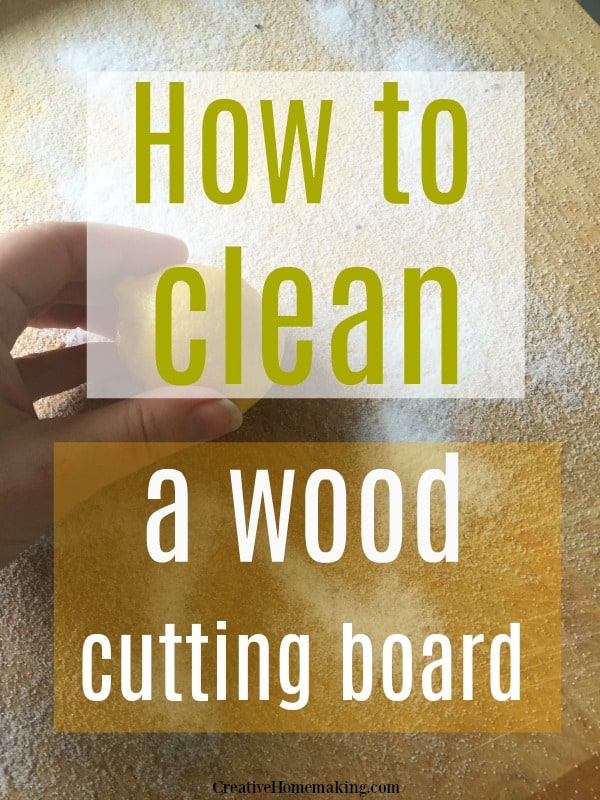
Maintaining Your Wood Cutting Board
Taking care of your wood cutting board is essential to ensure its longevity and quality. Maintaining your kitchen tools properly will not only help them last longer but also keep them hygienic and safe to use. Here are some tips on how to maintain your wood cutting board:
Hand-wash Your Cutting Board
Hand-washing is the best way to clean a wooden cutting board. Avoid using the dishwasher as the high temperature and moisture can cause the wood to warp and crack. Instead, use a mild dish soap and warm water to clean your cutting board. Rinse it thoroughly and dry it with a clean towel.
Oil Your Cutting Board
Wood cutting boards need to be oiled regularly to prevent them from drying out and cracking. Use a food-grade mineral oil or beeswax to oil your board. Apply a generous amount of oil to the board and let it sit for a few hours or overnight. Wipe off the excess oil with a clean towel.
Avoid Excessive Moisture
Wood is a porous material, and excessive moisture can cause it to warp and crack. Avoid soaking your cutting board in water or leaving it wet for an extended period. Dry your board thoroughly after each use and store it in a dry place.
Use a Cutting Board Only for Food
Using your cutting board for other purposes can cause it to wear out quickly. Avoid using it as a serving tray or a work surface. Use it only for cutting food to maintain its quality.
Sand Your Cutting Board
Over time, your cutting board may develop scratches and grooves. Sanding your board with a fine-grit sandpaper can help remove these imperfections and make it smooth again. Sanding can also help remove any bacteria that may have accumulated on the surface.
Frequently Asked Questions
What are some recommended oils or waxes to use on a wooden cutting board?
There are several types of oils and waxes that you can use to maintain your wooden cutting board. Mineral oil, beeswax, and coconut oil are some of the most commonly used oils. However, it is recommended to use food-grade mineral oil as it is safe for consumption. Beeswax is also a great option as it helps to seal the wood, making it more resistant to moisture. Coconut oil is another popular choice as it has natural anti-bacterial properties.
How do you properly clean a wooden cutting board?
To properly clean a wooden cutting board, you should first scrape off any excess food particles with a scraper or a knife. Then, wash the cutting board with warm soapy water and rinse it thoroughly. Avoid using harsh detergents or abrasive cleaners as they can damage the wood. After washing, dry the cutting board with a clean towel and allow it to air dry completely before storing it.
Are there any natural ingredients that can be used to clean a wooden cutting board?
Yes, several natural ingredients can be used to clean a wooden cutting board. Lemon and salt can be used to remove stains and odors. Baking soda can also be used to remove stains and disinfect the board. Vinegar is also a great natural disinfectant that can be used to clean a wooden cutting board. However, it is recommended to use these ingredients sparingly as they can dry out the wood.
What is the best way to disinfect a wooden cutting board?
The best way to disinfect a wooden cutting board is to use a solution of water and vinegar. Mix equal parts of water and vinegar and apply the solution to the cutting board. Allow it to sit for a few minutes before rinsing it off with warm water. You can also use a solution of hydrogen peroxide and water to disinfect the cutting board.
How often should you oil a wooden cutting board?
It is recommended to oil a wooden cutting board once a month to keep it well-maintained. However, the frequency of oiling depends on how often you use the cutting board. If you use the cutting board frequently, you may need to oil it more often.
Can a wooden cutting board be washed in the dishwasher?
No, you should not wash a wooden cutting board in the dishwasher as the high heat and moisture can damage the wood. Instead, wash the cutting board by hand with warm soapy water and dry it thoroughly before storing it.
Follow my cleaning hacks board on Pinterest.
In case you missed it:
- Understanding the Importance of Cleaning Your Wood Cutting Board
- Choosing the Right Tools for Cleaning
- Cleaning Your Wood Cutting Board Step by Step
- Dealing with Tough Stains and Odors
- Disinfecting Your Wood Cutting Board
- Caring for Your Wood Cutting Board After Cleaning
- Preventing Damage to Your Wood Cutting Board
- Maintaining Your Wood Cutting Board
- Frequently Asked Questions
